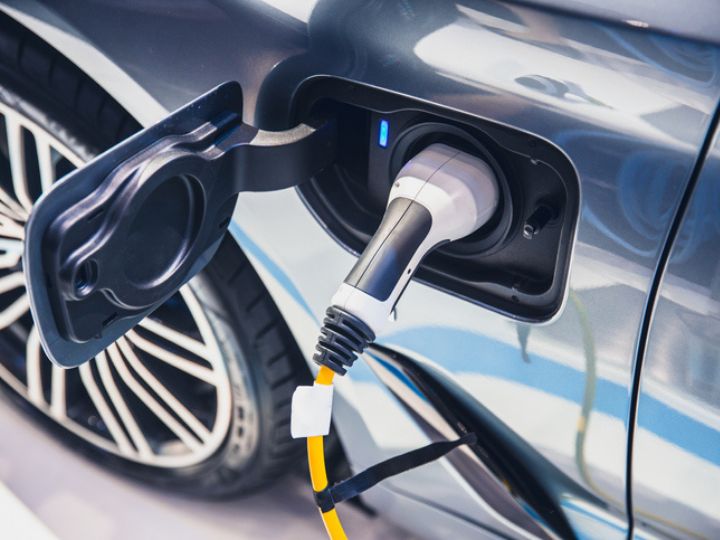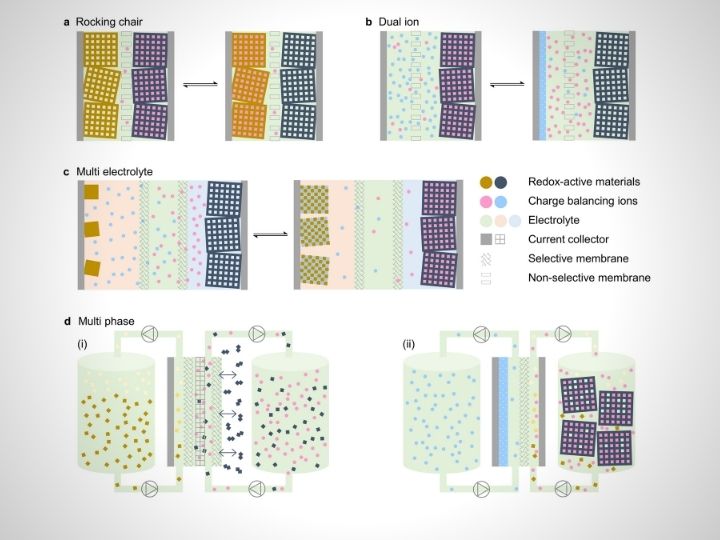


Lithium-ion batteries, which today power everything from the smartphones we carry in our pockets to the electric vehicles we drive, are projected to capture 80% of the rechargeable battery market in the coming years.
There's good reason for their popularity – lithium-ion batteries offer better battery capacity, efficiency and longevity than others in the current marketplace. However, they are still quite expensive and can catch fire or explode in extreme conditions.
Two top battery experts at the University of Houston contend that the gold-standard lithium-ion battery is about to get some competition. They are betting on humble aqueous batteries – with water-based electrolytes – generally regarded as safe, reliable and affordable.
"The idea is to develop advanced aqueous batteries that can combine better safety and higher voltage," said Yan Yao, Hugh Roy and Lillie Cranz Cullen Distinguished Professor of Electrical and Computer Engineering and principal investigator at the Texas Center for Superconductivity at the University of Houston. Yao has been leading research on energy storage materials and devices for about a decade now. His team is on a mission to create better, safer and less expensive batteries.
Yao, and Yanliang "Leonard" Liang, research assistant professor of electrical and computer engineering, were recently invited by Nature Reviews Materials, a high-impact academic journal, to review the evolution of rechargeable aqueous batteries. "Designing modern aqueous batteries" highlights key breakthroughs over the last decade and provides guidance and direction for new research.
"Our review is extensive in scope because we wanted to paint a big picture on the landscape of aqueous batteries," Liang said. "If we don't understand the overall picture, we can't know where the next opportunity will be."
Where are aqueous batteries now and where do they need to be?
The big push toward electrification in almost every aspect of life, the growing demand for consumer electronics and electric vehicles and the need for adequate storage for renewable energy are driving the demand for batteries higher and higher.
Commercial aqueous batteries that exist today lack the energy density and lasting power needed to be seriously considered for large-scale application such as transportation and grid storage.
However, Liang and Yao stress that innovations involving materials and chemistries, coupled with other research advances have created new opportunities for a modern, more advanced form of aqueous batteries.
Rechargeable aqueous batteries offer many advantages – abundant and low-cost raw materials; minimal requirements for manufacturing environments; non-inflammable; simple fabrication and high power, which determines how long it takes to fully charge and accelerate from 0 to 60 mph.
They have their drawbacks, too – narrow thermodynamic electrochemical stability window, faulty operations that could lead to explosions and, of course, low energy density.
According to the authors, there are modern versions made with innovative materials that are in the early stages of commercialization which are key developments in the transition to the next big battery research breakthrough.
The goal is to create an advanced aqueous battery that can deliver the best of both worlds. "This new water-based battery will deliver better safety and higher voltage," Yao said.
Designing the breakthrough aqueous battery
Designing the new and improved version of the aqueous battery that will revolutionize the battery market is no easy task. It requires knowledge of the most basic intricacies and new technologies to create the ideal version – from mixing and matching ion selective membranes and coatings to lean water electrolytes, to new types of electrode reactions and modular cell design.
According to the researchers, the goal is to widen the window of electrochemical stability, allowing battery chemistry to work across wider voltage ranges and produce more energy, leading to new opportunities.
"How we integrate the different components will have a profound impact in this field," Liang said. "We must mix and match and try new combinations. Sometimes it will result in improvement in one area but compromises in another. We have to be realistic and keep trying to make it better and better."
It's all about coming up with smart combinations that will deliver the twin targets of high energy and high safety.
Liang, whose research interest spans everything from solid state and aqueous batteries to multivalent metal batteries, as well as lithium and sodium batteries, is hopeful that the ideal is achievable thanks to modern tools and new discoveries. "One day, you will have an aqueous battery that has the same voltage as the lithium-ion battery, but it will be safer because it is water-based," he said.
However, researchers will have to continue pursuing improvements to turn the hope into the reality of an advanced commercially viable aqueous battery. There is excellent incentive to spur researchers on – not only will the aqueous batteries of the future offer more energy and safety, but they will also make battery disposal easier on the environment because of the materials used.
Yao and Liang recently launched a startup called LiBeyond to scale up and further develop innovative battery technologies originally developed at UH. They envision possible applications in electric vehicles and other areas of transportation to help power entire fleets and grid-scale storage.
"This will be especially important when grid reliability is key, such as during situations like hurricanes, winter storms and other emergencies," Yao said. He added that wearable technologies would also benefit from this development.
"One of the key features of aqueous batteries is safety, which is vital in wearable technologies because you 'wear' them directly on the body," he said. "The possibilities these modern aqueous batteries will offer [once developed] are endless."






